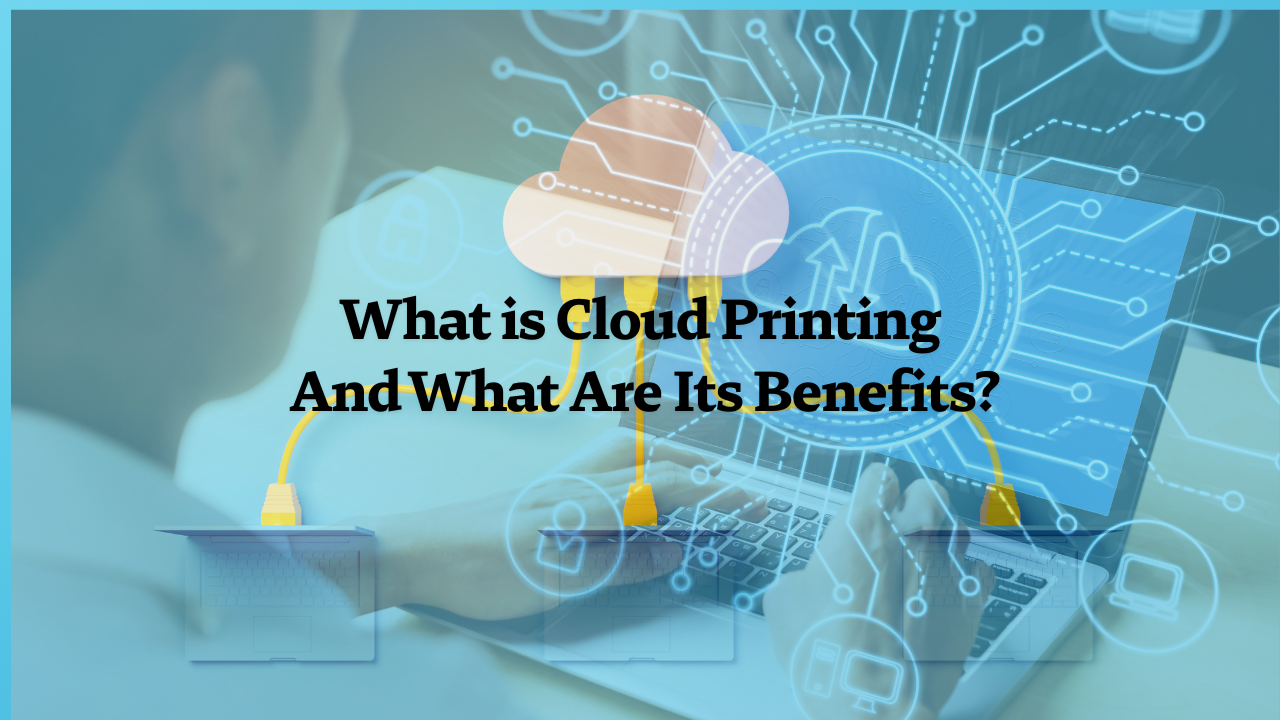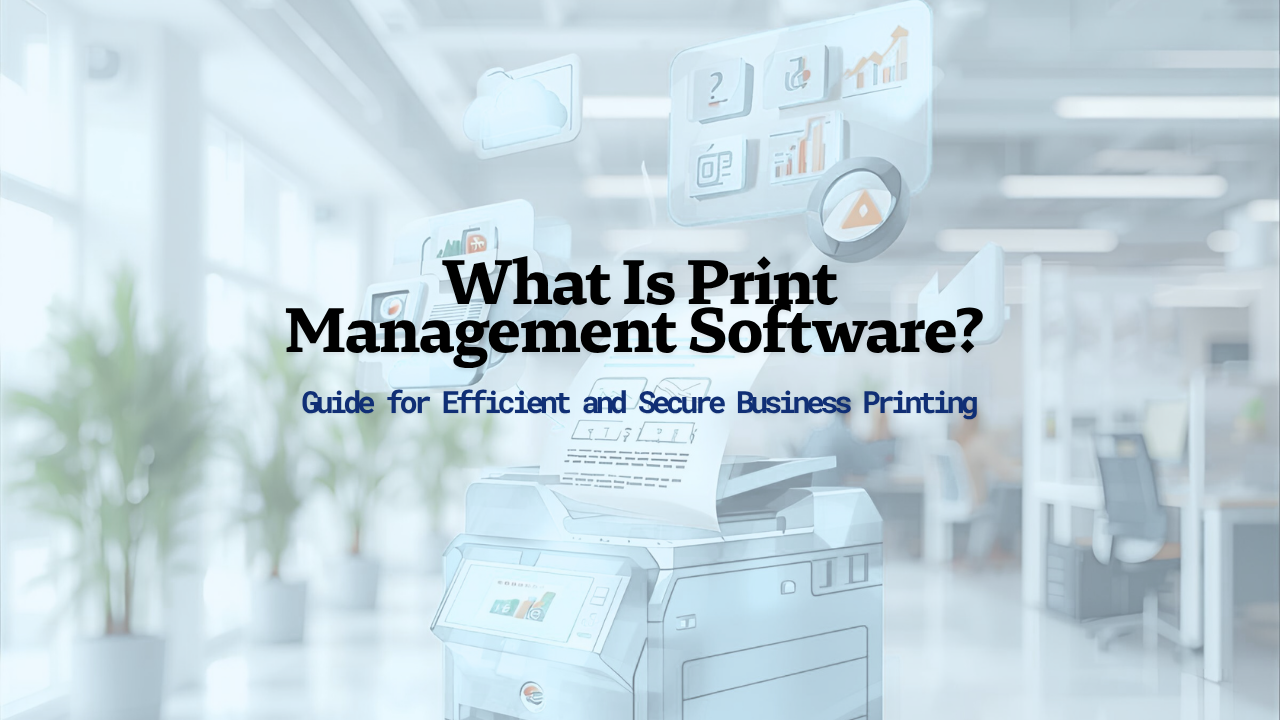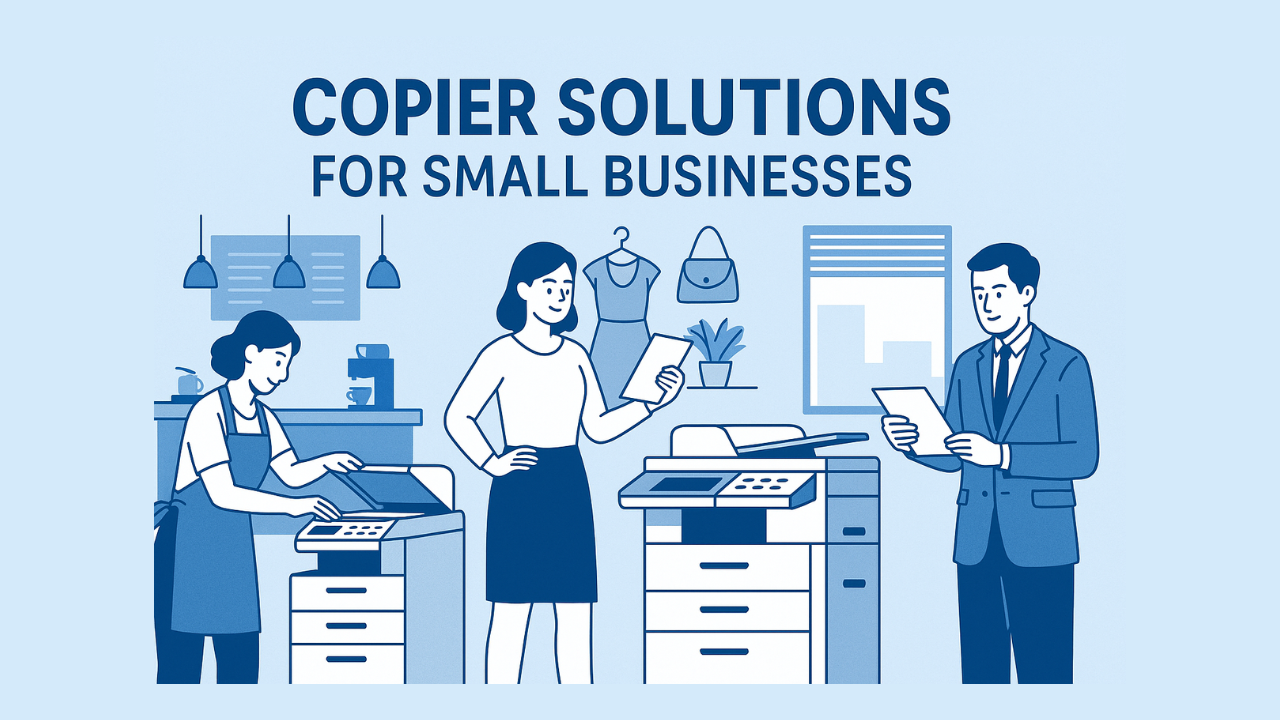Introduction to Effective Vendor Selection for Copier Services
Choosing the right vendor for copier services is critical for ensuring operational efficiency, cost-effectiveness, and reliability in office environments. This guide provides a comprehensive roadmap to evaluate, select, and manage copier and print management vendors, tailored to diverse business needs.
Defining Business Needs and Requirements
 Before selecting a copier or print management vendor, it is crucial to thoroughly assess your business's specific printing needs. Start by evaluating your print volume—how much printing your organization does daily, weekly, or monthly. Consider whether your business requires color printing or if black-and-white copies suffice. Space constraints within your office environment also influence the choice, as the physical dimensions of copiers must fit comfortably in designated areas.
Before selecting a copier or print management vendor, it is crucial to thoroughly assess your business's specific printing needs. Start by evaluating your print volume—how much printing your organization does daily, weekly, or monthly. Consider whether your business requires color printing or if black-and-white copies suffice. Space constraints within your office environment also influence the choice, as the physical dimensions of copiers must fit comfortably in designated areas.
Beyond basic printing, identify any additional functions your business may need. For instance, do you require advanced scanning capabilities, faxing options, or borderless printing for presentations and marketing materials? Understanding these requirements will help narrow down suitable models and features.
Another vital factor is budget constraints. Determine how much your organization is willing to invest upfront in purchasing a copier versus opting for leasing arrangements. Additionally, consider projected growth to ensure the solution remains scalable and adaptable in the future.
When evaluating potential vendors, several criteria should be considered. Reliability and reputation are paramount—review customer feedback, industry awards, and the vendor’s long-term presence in the market. Exceptional support services, including quick maintenance, on-site repairs, and staff training, help maintain operational efficiency.
Cost comparison is equally important. Carefully analyze leasing versus buying options, including service fees, supplies, and potential hidden charges. Opt for vendors who offer transparency in their pricing structures.
Modern copiers with up-to-date technology—such as cloud connectivity, mobile printing, and enhanced security features like pull printing and encryption—future-proof your investment. Additionally, consider flexibility; a vendor capable of customizing services to match your evolving needs will provide the most value.
Proximity of the vendor’s warehouse and sales office can improve service responsiveness. Low employee turnover rates often reflect more experienced support teams, leading to consistent service. Moreover, vendors with live call centers and immediate response channels can significantly enhance customer satisfaction.
Choosing a vendor that offers a curated selection of trusted brands and models ensures their technicians are well-versed and capable of providing efficient servicing. It’s also beneficial if their infrastructure, such as spare parts inventory, is conveniently located nearby.
Finally, consider the vendor’s ability to adapt to your organizational size and industry-specific needs. For small to mid-sized businesses, dealers with personalized service may be more effective than large manufacturers that often focus on bigger clients. The right partner will understand your workflows, security concerns, and environmental goals—making your printing setup more efficient, secure, and sustainable.
Market Research and Structured Evaluation Process
 Before selecting a copier vendor, it is essential to conduct thorough market research to identify reputable providers known for reliability, quality, and customer support. Exploring reviews, industry awards, and business longevity can guide you toward established vendors with proven track records.
Before selecting a copier vendor, it is essential to conduct thorough market research to identify reputable providers known for reliability, quality, and customer support. Exploring reviews, industry awards, and business longevity can guide you toward established vendors with proven track records.
Once potential vendors are shortlisted, developing clear, detailed requests for proposals (RFPs) based on your specific business needs is crucial. An effective RFP should include your volume requirements, preferred features like color printing or scanning capabilities, support services, and budget constraints. This clarity helps vendors tailor their responses to meet your expectations.
Implementing a multi-criteria evaluation process ensures an objective comparison among proposals. A common approach involves creating a scoring system that considers various factors such as cost, technology features, vendor reputation, support services, and flexibility. Assigning weights to each criterion reflects their importance to your business.
Are there tools or methodologies available to assess and compare copier vendor options?
Yes, organizations utilize a range of tools and methodologies. Frameworks like the 10C Model of Supplier Evaluation provide a comprehensive assessment based on capacity, competence, cost, and consistency. Structured scorecards, comparison templates, and cost-benefit analyses help quantify each vendor’s strengths and weaknesses.
During this process, requesting demonstrations or trial periods can help verify the vendor’s claims and assess usability. Performance monitoring tools like vendor scorecards and strategic tools like the Kraljic Matrix assist in ongoing evaluation and management, ensuring the selected vendor continues to meet your needs over time.
In summary, a systematic approach combining thorough research, detailed RFPs, and multi-criteria evaluation tools will enable your business to choose the most suitable copier vendor efficiently.
Feature Comparison and Cost Analysis

How can I compare features, costs, and service quality of different copier vendors?
When assessing multiple copier vendors, it’s important to look beyond just the initial price. Start by examining the technical specifications of the copiers they offer. Consider factors such as printing speed, resolution quality, security features, and connectivity options like cloud support and mobile printing.
Request detailed and transparent price quotes from each vendor. These should include the upfront acquisition costs, leasing or purchase options, ongoing maintenance fees, and the costs of supplies like toner and ink. Be wary of hidden charges or additional fees for accessories, upgrades, or service calls.
Evaluating service quality is equally essential. Look into customer reviews, feedback on support responsiveness, and the terms of service level agreements (SLAs). Consider vendors with quick response times, local support teams, and comprehensive training offerings for your staff.
To get a full picture, calculate the total cost of ownership (TCO). This includes ongoing expenses such as energy consumption, supplies, and support services, alongside the purchase or lease cost. A comprehensive TCO analysis helps identify the most cost-effective solution over the lifespan of the copier.
Lastly, don’t forget to factor in the reputation and reliability of the vendor. Well-established vendors with good customer satisfaction scores and industry awards tend to offer more dependable after-sales service. By comparing each vendor on these grounds, you can choose a copier solution that balances cost, features, and support quality effectively.
Enhancing Support, Security, and Sustainability
 When selecting a copier or print management vendor, it is essential to assess their support capabilities thoroughly. Reliable vendors should offer local support networks, including a 24/7 helpdesk for immediate assistance, and provide on-site repairs to minimize downtime. A vendor's ability to deliver prompt maintenance response and comprehensive training ensures that staff can utilize equipment efficiently and effectively.
When selecting a copier or print management vendor, it is essential to assess their support capabilities thoroughly. Reliable vendors should offer local support networks, including a 24/7 helpdesk for immediate assistance, and provide on-site repairs to minimize downtime. A vendor's ability to deliver prompt maintenance response and comprehensive training ensures that staff can utilize equipment efficiently and effectively.
Security features are equally critical in today’s digital landscape. Look for vendors that incorporate encrypted data transfer, robust user authentication, and pull-printing solutions that hold print jobs until released by an authorized user. These measures safeguard sensitive information, maintain compliance, and protect organizational data from potential breaches.
Environmental sustainability should also be a priority. Choose vendors committed to eco-friendly practices, such as offering energy-efficient copier models and promoting green printing initiatives. Many providers generate green reports and support carbon footprint reduction efforts, aligning with corporate sustainability goals.
A comprehensive vendor evaluation involves considering their support infrastructure, security measures, and environmental practices to ensure a sustainable, secure, and dependable print environment. Establishing ongoing management practices, including regular performance reviews and relationship building, helps maintain high service standards and adapt to evolving organizational needs.
| Aspect | What to Look For | Additional Considerations |
|---|---|---|
| Support Capabilities | Local service, 24/7 helpdesk, on-site repairs | Quick response times and comprehensive staff training ensure seamless operations |
| Security Features | Encrypted transfer, user authentication, pull-printing | Protects confidential data and ensures regulatory compliance |
| Environmental Sustainability | Eco-friendly models, green reporting | Supports energy efficiency and aligns with sustainability initiatives |
| Vendor Evaluation | Proven reputation, customer feedback, industry awards | Transparent communication and flexible, customizable solutions foster long-term success |
Choosing a vendor that excels in all these areas contributes to a robust, secure, and environmentally responsible printing infrastructure, supporting your organization’s operational and ethical goals.
Final Considerations and Long-Term Optimization
 When selecting a copier or print vendor, it’s important to look beyond initial costs and features. Reviewing contractual terms thoroughly helps ensure flexibility and clarity, particularly regarding exit strategies should your needs change. Vendors offering adaptable contracts and provisions for upgrades or scaling support are preferable, as they accommodate your evolving business environment.
When selecting a copier or print vendor, it’s important to look beyond initial costs and features. Reviewing contractual terms thoroughly helps ensure flexibility and clarity, particularly regarding exit strategies should your needs change. Vendors offering adaptable contracts and provisions for upgrades or scaling support are preferable, as they accommodate your evolving business environment.
Planning for periodic reviews is essential. As technology advances and your business grows, reorder your assessment of the vendor’s performance, solutions, and technologies. Regularly re-evaluating services against benchmarks and KPIs ensures that your print environment remains optimized and cost-effective.
Building strong, long-term relationships with vendors fosters innovation and continuous improvement. Prioritizing vendors who focus on service quality, technological updates, and proactive support will enhance your operational efficiency over time. Maintaining open communication and strategic partnerships ensures your printing infrastructure adapts seamlessly to future requirements.
In summary, best practices include clear contractual agreements, ongoing performance evaluations, and cultivating collaborative vendor relationships. These steps help safeguard your investment and support your business’s long-term efficiency and growth.
Final Recommendations for Smart Copier Vendor Selection
Selecting the right copier or print management vendor requires a strategic approach that incorporates thorough needs assessment, detailed evaluation, and continuous management. Businesses should prioritize vendors with a proven track record, excellent support, and innovative solutions aligned to future requirements. Employing structured methodologies, leveraging assessment tools, and fostering strong vendor relationships will not only optimize operational performance but also provide long-term value and flexibility. Regular reviews and adaptive strategies are essential for maintaining a competitive edge and scaling with organizational growth.
References
- How to Choose the Right Copier Vendor for Your Business
- How To Select the Right Copier Vendor - AOT
- Features and Vendor: A Guide to Multifunction Copiers - DTS
- 10 Tips For Choosing The Best Copier Dealer - 1800 Office Solutions
- How to choose a print management vendor - PaperCut
- Copier Equipment and Maintenance Purchases
- Six Steps for a Successful Vendor Selection - ITIL org
- 7 Criteria for Selecting a Print Management Vendor | UniPrint.net
- Choosing a Managed Print Vendor: Foremost Selection Criteria




.png)

.png)
























